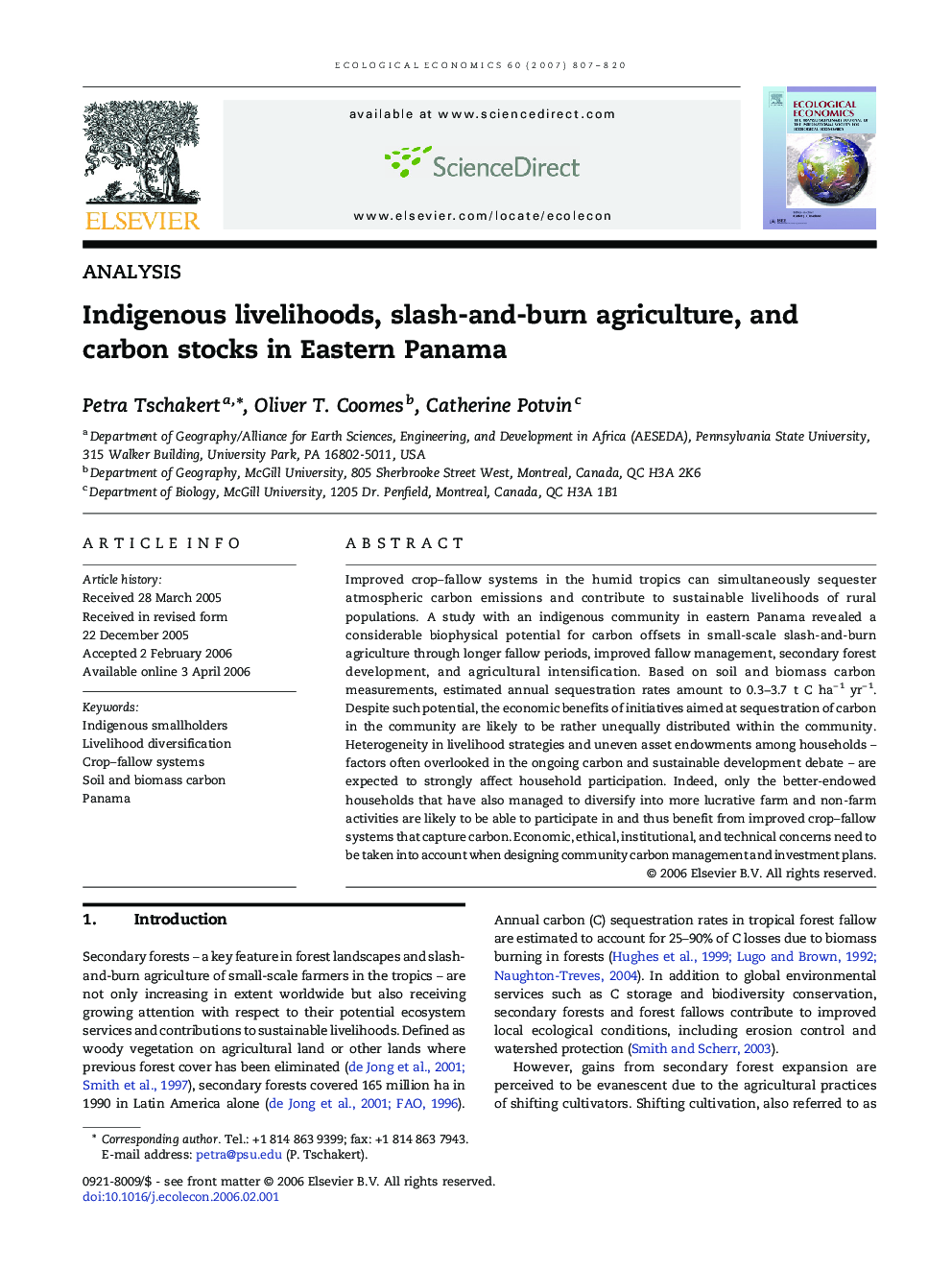| کد مقاله | کد نشریه | سال انتشار | مقاله انگلیسی | نسخه تمام متن |
|---|---|---|---|---|
| 5052298 | 1476416 | 2007 | 14 صفحه PDF | دانلود رایگان |
عنوان انگلیسی مقاله ISI
Indigenous livelihoods, slash-and-burn agriculture, and carbon stocks in Eastern Panama
دانلود مقاله + سفارش ترجمه
دانلود مقاله ISI انگلیسی
رایگان برای ایرانیان
موضوعات مرتبط
علوم زیستی و بیوفناوری
علوم کشاورزی و بیولوژیک
بوم شناسی، تکامل، رفتار و سامانه شناسی
پیش نمایش صفحه اول مقاله

چکیده انگلیسی
Improved crop-fallow systems in the humid tropics can simultaneously sequester atmospheric carbon emissions and contribute to sustainable livelihoods of rural populations. A study with an indigenous community in eastern Panama revealed a considerable biophysical potential for carbon offsets in small-scale slash-and-burn agriculture through longer fallow periods, improved fallow management, secondary forest development, and agricultural intensification. Based on soil and biomass carbon measurements, estimated annual sequestration rates amount to 0.3â3.7 t C haâ 1 yrâ 1. Despite such potential, the economic benefits of initiatives aimed at sequestration of carbon in the community are likely to be rather unequally distributed within the community. Heterogeneity in livelihood strategies and uneven asset endowments among households - factors often overlooked in the ongoing carbon and sustainable development debate - are expected to strongly affect household participation. Indeed, only the better-endowed households that have also managed to diversify into more lucrative farm and non-farm activities are likely to be able to participate in and thus benefit from improved crop-fallow systems that capture carbon. Economic, ethical, institutional, and technical concerns need to be taken into account when designing community carbon management and investment plans.
ناشر
Database: Elsevier - ScienceDirect (ساینس دایرکت)
Journal: Ecological Economics - Volume 60, Issue 4, 1 February 2007, Pages 807-820
Journal: Ecological Economics - Volume 60, Issue 4, 1 February 2007, Pages 807-820
نویسندگان
Petra Tschakert, Oliver T. Coomes, Catherine Potvin,